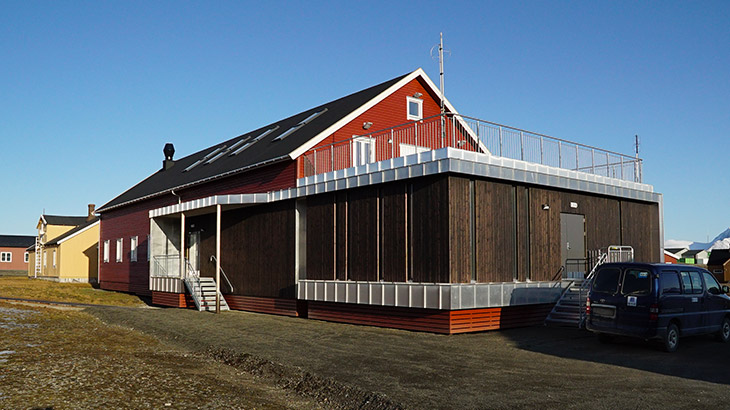National Institute of Polar Research
Arctic Environment Research Center
Promoting close collaboration for Arctic studies by Japanese and international researchers
Director Jun INOUE
The Arctic Environment Research Center (AERC) of NIPR was originally established in June 1990 to promote the study of sea ice, oceanography, marine and terrestrial ecology, atmospheric sciences, glaciology, and upper atmospheric sciences in the Arctic. Since April 2015, AERC was reorganized to the present Center to tackle more effectively Arctic issues by enhancing advanced research capability and strategic research planning. As a core and representative institute for the Arctic research in Japan, NIPR with AERC has been leading the first national Arctic program: 'GRENE Arctic Climate Change Research Project' in FY2011-2015, and its successive program: 'Arctic Challenge for Sustainability (ArCS)' in FY2015-2019. Collaborating with other core institutes, NIPR has launched the new and third national program: 'Arctic Challenge for Sustainability II (ArCS II)' for FY2020-2024 in June 2020 (see right page).
AERC will proceed to conclude arrangements with Arctic institutes for use of their facilities and supports for field observations by Japanese researchers, which bring them a plenty of opportunities for the international collaborative studies.
Facilities for collaborative observation
The Ny-Ålesund Research Station (Ny-Ålesund NIPR Observatory since 2019), the University Centre in Svalbard (UNIS) and the International Arctic Research Center (IARC) of the University of Alaska, Fairbanks are available to use for collaborative studies in the Arctic, along with the following facilities: the Greenland Institute of Natural Resources (GINR), the Spasskaya Pad Scientific Forest Station (Spa), Ice Base Cape Baranov research station (IBCB) both in Russia, the Canadian High Arctic Research Station (CHARS), and so on.
International Collaborative observations
AERC supports a wide range of international joint projects, such as the bipolar aurora conjugate observation in Iceland and Syowa stationin the Antarctic, the European incoherent scatter (EISCAT) radar project, and the East Greenland Ice Core Project (EGRIP). Since 2019 we also partially assist the MOSAiC project, the largest international collaborative research program for the comprehensive study of the Arctic sea using R/V Polarstern as a drifting scientific laboratory.
Japan Arctic Research Network Center (J-ARC Net)
AERC is working with the Arctic Research Center at Hokkaido University and the Japan Agency for Marine-Earth Science and Technology (JAMSTEC) as partners of the Japan Arctic Research Network Center, J-ARC Net. Established in April 2016, J-ARC Net has been seeking for interdisciplinary studies on the interaction of environment and human activities, as well as to discover approaches to solving problems through the collaborative efforts of industry, government and academia. In this program AERC provides researchers with facilities for collaborative obseravtions.
Japan Consortium for Arctic Environmental Research (JCAR)
JCAR was established in May 2011 as a nationwide network for promoting Arctic environmental research. The JCAR office is located in the AERC administration. JCAR coordinates future research plans by editing and publishing the 'Long-term Plan for Arctic Environmental Research' (http://www.jcar.org/english/longterm/), as well as collecting and delivering domestic and international meeting information, out-reach activities on the Arctic environment and the early career development. JCAR also co-organized the Arctic Science Summit Week (ASSW2015) in April 2015. JCAR has been hosting the International Symposium on Arctic Research (ISAR) since the fifth (ISAR-5).
Ny-Ålesund NIPR Observatory
Located in Ny-Ålesund, Svalbard(79N, 12E), the Ny-Ålesund NIPR Observatory was established after concluding an agreement for cooperation with the Norwegian Polar Institute in 1991. Under the international collaborative research framework in Ny-Ålesund, NIPR Observatory supports a variety of studies such as clouds, aerosols, radiation, green house gases, vegetation and ecologies. In April 2019, the Observatory was relocated to the brand new building which was constructed in the core area of the Ny-Ålesund Station.

Ny-Ålesund Research Station










